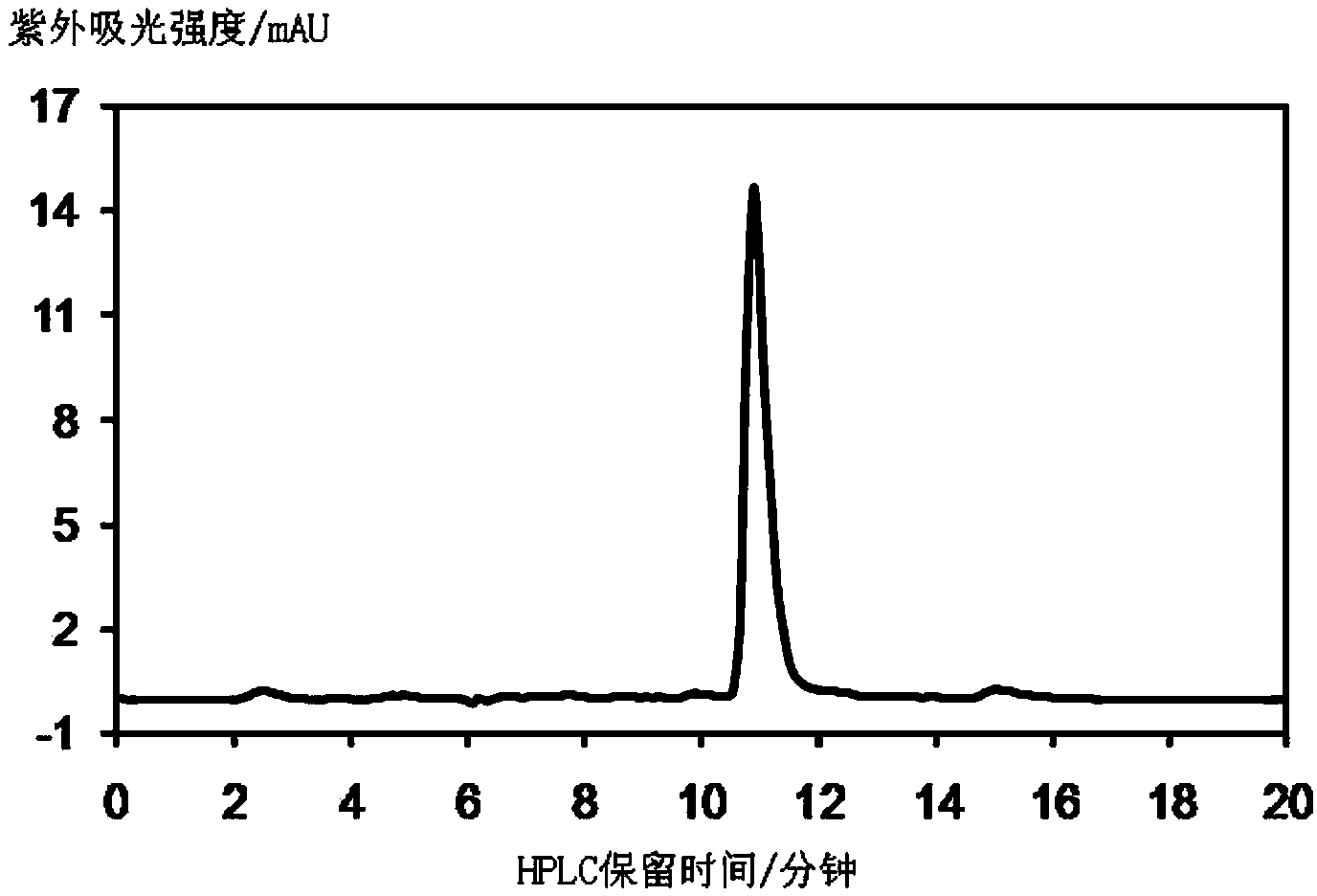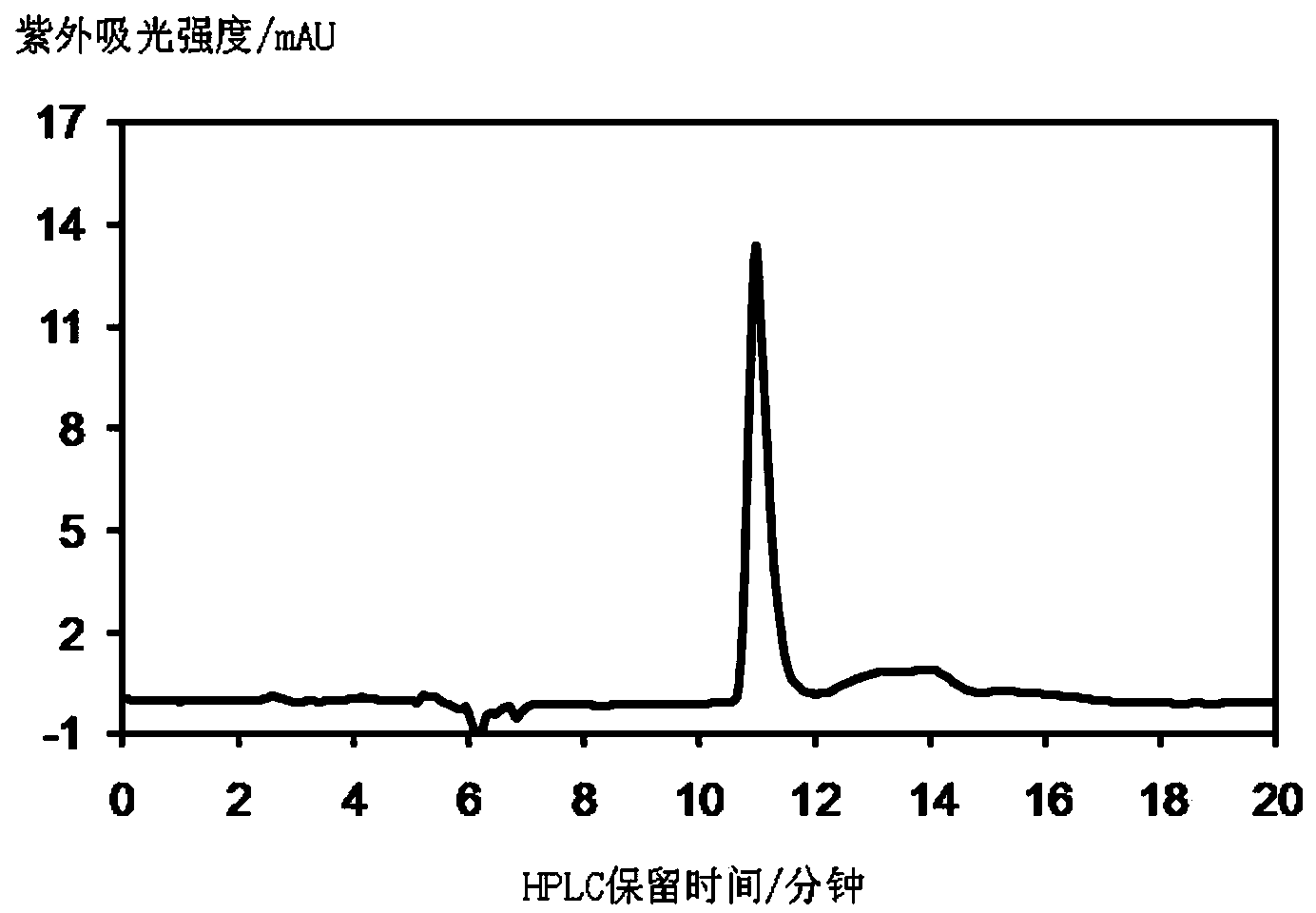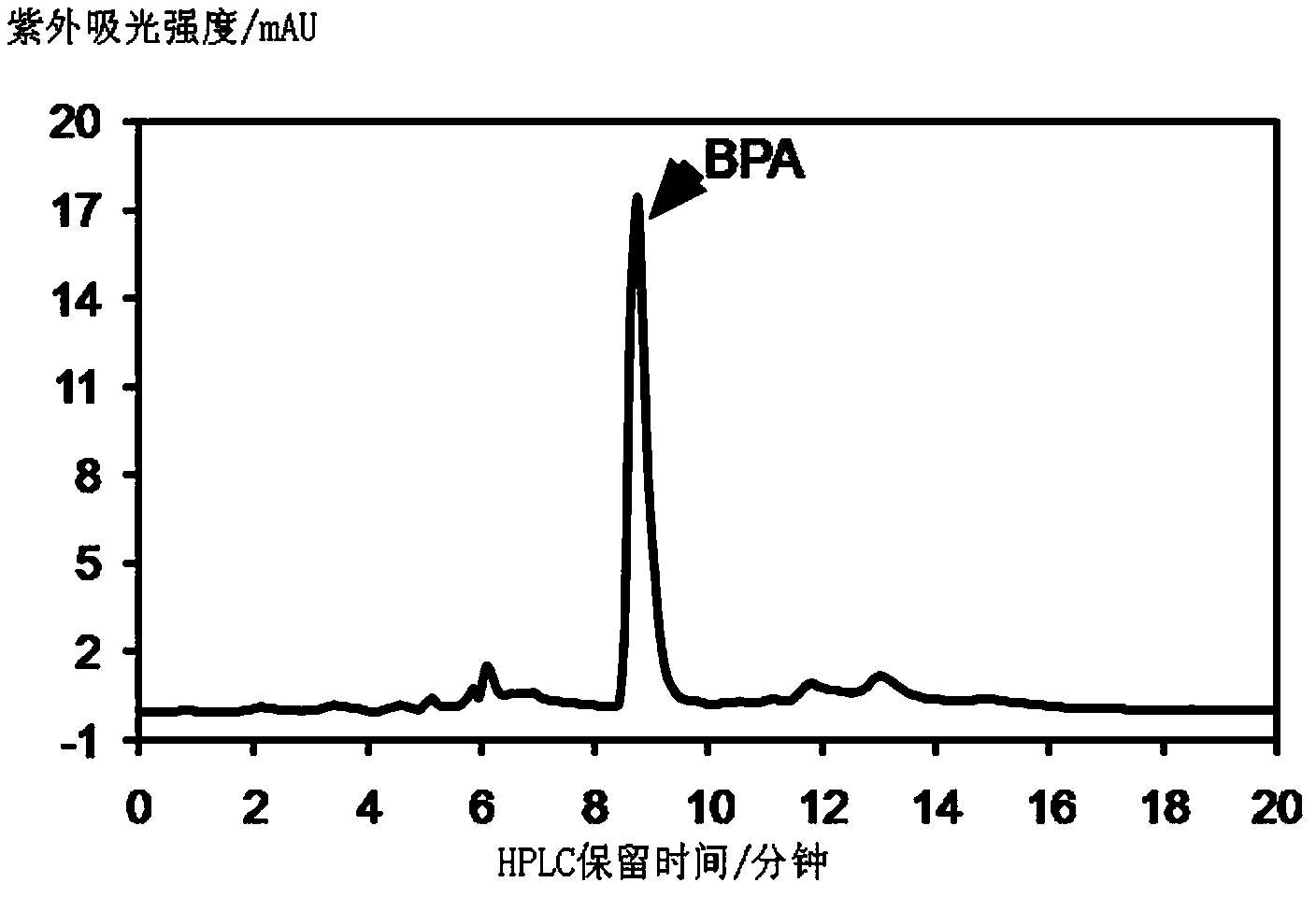Method for separating estrogen endocrine disruptors in detection environment
A technology for endocrine disruptors and estrogen, which is applied in material separation, measuring devices, and analytical materials, can solve problems such as low efficiency and heavy workload, and achieve the effect of solving the difficulty of purification and separation and improving detection efficiency
- Summary
- Abstract
- Description
- Claims
- Application Information
AI Technical Summary
Problems solved by technology
Method used
Image
Examples
Embodiment 1
[0040] This embodiment is a method for separating and detecting estrogen endocrine disruptors in the environment, comprising the following steps:
[0041] Step 1: Detect the binding activity of the affinity column, the specific method is as follows:
[0042] Insert 3 mL of the activated M3 strain into 20 mL of LB medium (containing 150 g / L sucrose and 50 mg / L kanamycin), and culture with shaking at 37 °C until OD 600 =0.9-1.0 (optical path=1 cm), slowly cool down to 15°C within 3 hours, add inducer 0.5mM IPTG and continue to cultivate for 16 hours, collect the bacteria by centrifugation in two parts, and freeze at -20°C. Take one of them and resuspend the bacteria with 1 mL of equilibration buffer, sonicate the bacterial cell wall (ice bath), collect the supernatant by centrifugation at low temperature, mix and incubate with the activated Ni-NTA affinity column at low temperature for 2 h, and then incubate for 3 mL of equilibration buffer to rinse. Prepare 1 mL of estradiol ...
Embodiment 2
[0049] This embodiment is a method for separating and detecting estrogen endocrine disruptors in the environment, comprising the following steps:
[0050] Step 1: Detect the binding activity of the affinity column, and calculate the recovery efficiency of the affinity column based on the recovered amount of estradiol as in Example 1.
[0051] Step 2: Separation and detection of bisphenol A by an estrogen receptor protein affinity column for the water sample containing bisphenol A standard after chlorine disinfection, the specific steps are as follows:
[0052] When the recovery efficiency of estradiol detected by the affinity column in step 1 was greater than 75%, another portion of the bacteria in step 1 was used to prepare an affinity column for estrogen receptors as described in step 1. Filter the water sample containing bisphenol A after chlorine disinfection with a 0.22 μm filter membrane, adjust its pH value to 2-3, concentrate the sample with HLB solid-phase extraction ...
PUM
 Login to view more
Login to view more Abstract
Description
Claims
Application Information
 Login to view more
Login to view more - R&D Engineer
- R&D Manager
- IP Professional
- Industry Leading Data Capabilities
- Powerful AI technology
- Patent DNA Extraction
Browse by: Latest US Patents, China's latest patents, Technical Efficacy Thesaurus, Application Domain, Technology Topic.
© 2024 PatSnap. All rights reserved.Legal|Privacy policy|Modern Slavery Act Transparency Statement|Sitemap



